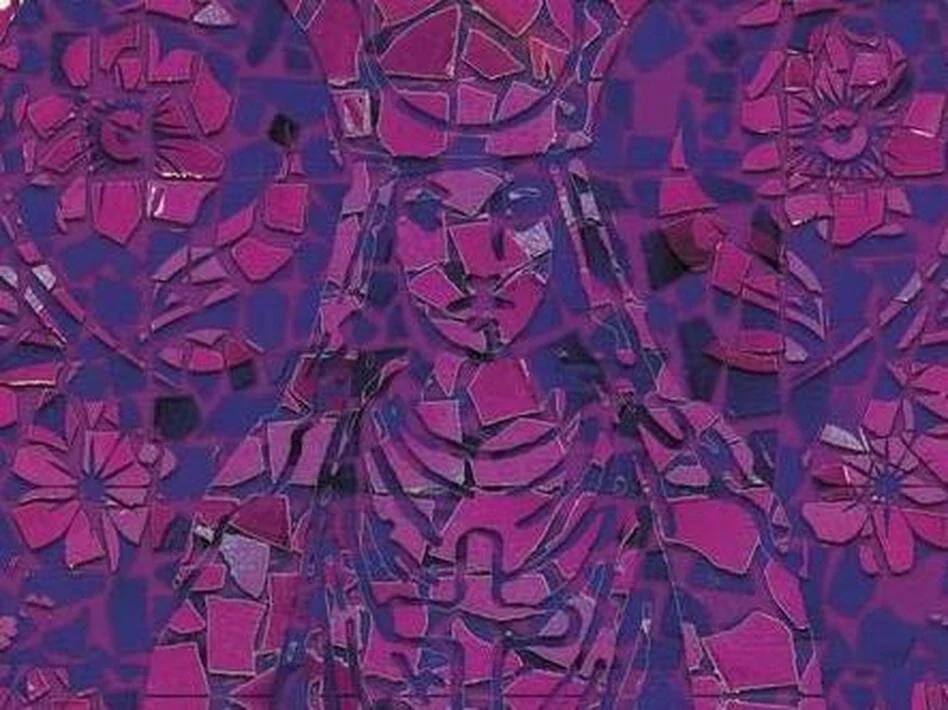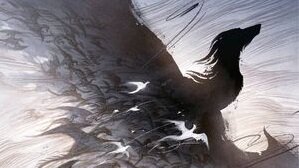The Fiction Unbound writers love a good superhero movie, and Black Panther proved to be so much more. It bathes in the wonder of a country like Wakanda and stares unblinking into the implications of a country like Wakanda. It imbues real life into a large cast of complicated characters. It introduces a seductive, sympathetic villain many can't help rooting for. And it satisfies on most every turn it takes.
Amanda Baldeneaux: Step Aside, Tony Stark; The Princess-Inventors are Here
In second grade, my school hosted an “Invent America” contest. I “invented” a dog-walking contraption that was essentially a carrot on a stick using a fancy cat harness; I was not destined for great things. Growing up on a steady diet of The Little Mermaid and Sleeping Beauty, I wasn’t concerned with not being a genius, though. I had bigger problems: would a satin pillow leave wrinkles on my face while napping? Does this seaweed make my hair look frizzy? I’m happy to report that the 1990’s Princess diet, like the Atkins diet, is donezo; Shuri is here.
Black Panther introduces us to the second-in-line to the Wakandan throne, T’challa’s little sister, Shuri. Shuri is Wakanda’s lead engineer, heading a lab filled with tech so sophisticated that countries would wage war to acquire it. Disney owns Marvel, technically making Shuri a Disney princess (Shuri even nods to the other technically-a-Disney-Princess-princess, Leia, through her sartorial choices and coifs). Since Frozen’s Elsa came along (and arguably, Rapunzel, although she was more artisan than inventor), princesses have evolved not just into powerful women, but ingenious women. Gone is the maiden/mother/crone trope, and in place is Elsa who invents contraptions out of ice fractals, live-action Belle who invents mule-powered laundry machines, and Shuri who invents, well, everything. Shuri is also one-half of the primary love story in Black Panther: the bond between her and her brother, T’Challa. Here is another subverted trope trod by Frozen, but made three-dimensional in Black Panther: love stories between family.
When T’Challa was in trouble, Shuri and other Wakanda ladies took matters into their own capable hands, both saving T’Challa’s life so he could fight another day, and then fighting alongside him with bravery and skill. Here’s where Tony Stark and Bruce Banner should be scared: Shuri doesn’t even need to turn herself into robot or a green giant to be an effective warrior, her body is strong enough as is. And there’s my favorite take-away from the film: women, Africans, people of color, all of the underestimated and overlooked: they/we are strong enough as is, and always have been. I’m glad Hollywood is catching on.
Read more about the multi-dimensional characters of Black Panther in Melvin L. Rogers' piece The Many Dimensions of Black Panther.
Danyelle C. Overbo: Badass Women and an Important Geopolitical Lesson
My husband and I got to see Black Panther on the Thursday evening as it was first released. I have to say that I agree with the vast majority in that it is an excellent movie. When will Hollywood actually learn that good stories mean good movies? They’ve been taught this lesson over and over again, but it never seems to stick. I would say that the narrative in Black Panther is very nearly perfect, from character evolution and plot arcs all the way down to the pacing of each scene. This is important stuff! All the more reason to celebrate the success of the film is the already much discussed nearly all-black cast, who (unsurprisingly) were extraordinary.
My favorite part of Black Panther, by and large, is the powerful female characters. T’Challa’s sister Shuri, played by Letitia Wright, was confident, smart, and sassy in the way every teenage girl wants to be. She is the one responsible for Black Panther’s suit and all new major technology advancements in Wakanda. What a role model for young girls! I wish I had her to look up to when I was thirteen. Then we get Danai Gurira as bald, warrior, badass Okoye. Though she is part of an elite squad of royal bodyguards and side character, she gets her own fully developed story arc (a lesser movie would have her only hanging out at the edges of scenes and doing cool fighting). T’Challa’s love interest, Lupita Nyong’o’s Nakia, is a fricken spy who knows multiple languages and is a totally independent woman with her own agenda. T’Challa’s mother, who has less screen time than the rest, resonates with such passion that I could watch a whole movie about her and her life alone. I could gush about all the women all damn day.
The thematic depth of the film was also a thing of beauty, so much so that I worry people will come away from the film not having fully grasped the real lesson in the narrative. On the spectrum of “How involved should a well-off country really be in the affairs of others?” you have two extremes, full-on isolationism on one end and total domination and control on the other. The amazing thing about Black Panther is that it shows the consequences of living on either of those extremes and tries to offer a third way - treading a fine line in the middle. It also makes it pretty clear that the middle path is not an easy one. In the beginning, Wakanda was fully isolated. It did not want to be involved in anyone else’s business for its own protection. It brings to mind the stance the United States took at the beginning of World War II. However, Black Panther quickly reveals what the other side of that isolationist coin looks like. Killmonger wants to go in the opposite direction and use Wakanda’s resources to, essentially, take over the world. As T’Challa learns, neither of those ways seems to be the right way. By the end of the film, T’Challa is attempting to tread that difficult middle ground. I hope we can take this lesson in real life and follow T’Challa’s lead.
Theodore McCombs: Bringing Blackness Out of the Background
Utopian science fiction’s great ambition is that, by imagining different and better ways of being, we help bring those hopeful futures into reality. Star Trek’s Nichelle Nichols played a respected black woman officer on the bridge of a starship, then recruited the first black astronauts into NASA. Black Panther, as a comic series and now as an MCU movie, is a brilliant participant in that utopian project, imagining an uncolonized African nation, Wakanda, that kept its resources and its people, and prospered apart from the African diaspora. Director Ryan Coogler invests that vision with the awe, romance, and longing it deserves, and I can’t wait to see what realities that vision inspires.
Jelani Cobb in The New Yorker positions Wakanda as a “redemptive counter-mythology” to the white invention of Africa as a hopelessly backward, historically empty continent. Both Wakanda and the Dark Continent, he points out, are equally imaginary, but they empower different groups: white narratives of Africa legitimized plunder and racism, but Wakanda frames white supremacy not only as illegitimate, but laughable. Black Panther’s mesmerizing production design takes the traditional African imagery associated, in paternalistic narratives, with “primitive existence”—straw huts, beads—and puts them on eye-popping skyscrapers and interface technology. In this way, Black Panther embraces Afrofuturism, that aesthetic movement that draws continuities between an African past and sophisticated black future.
It’s a joyous, necessary entry in a franchise and in a science-fiction landscape where diversity usually means having black faces on the screen, but rarely championing blackness. The Marvel Cinematic Universe, like Star Trek, has relied on memorable secondary characters of color to integrate its casts; while that’s a positive start—for Nichols, it was groundbreaking—sometimes that inclusivity has meant a vaguess or lack of engagement with blackness as a subject. Geordi La Forge (or, say, Falcon in the Captain America trilogy) is a beautiful black dork, but his presence never forced audiences to think about his blackness in the way that we do with T’Challa’s or Killmonger’s. Afrofuturism centers blackness, affirming the African diaspora as a source of wonder and expectation just as powerful as the white Western imagination. That’s an exciting moment for this Marvel fan, and an extraordinary promise of the movies to come.
Want more Afrofuturism? Check out Fiction Unbound’s own tribute to Octavia Butler’s Xenogenesis trilogy! Or pick up some classics old and new, like Nalo Hopkinson’s Brown Girl in the Ring, Samuel R. Delany’s Dhalgren, or Nnedi Okorafor’s Binti trilogy.
CS Peterson: Black Panther Shares the Screen and Creates a Broad Cast Worth Watching
Wow. Dazzling. Fresh. Timely. After Civil War I’ve gone to see movies in the Marvel universe, and don’t get me wrong, they’re still fun and all, a perfectly fine way to while a summer afternoon, but they’ve started to feel like variations on the variations on the variations of a theme. But not this origin story. Highlights for me: that T'Challa is not a lone knight but part of a family and a culture that all affect his choices. That in this Marvel movie there is more than one way to be a woman and be a hero -- the Dora Milaje especially. The sheer variety of female characters, almost as great as the variety of male characters, was stunning. That so many named female characters talked with each other about things other than the protagonist. And finally that (SPOILERS) the decision to stop fighting each other came from strong secondary characters confronting each other with a moral choice and not the protagonist standing up with a stirring speech telling everyone what to do. And the rhino smooch. Definitely the rhino smooch.
Part of the pleasure of watching a movie in the theatre is the live audience and it was fun to hear the laughter, surprise, and appreciation. The moment when T'Challa confronted the ancestors and his dad acknowledged ‘the truth he chose to ignore’ the room took on that intense quiet that only comes when an entire roomful of people are riveted to the action of the performers. Many have spoken eloquently about the film’s depiction of blackness.
Someday I want to explore the contrasting depictions of the Munsons in the movie Logan, a whole family besieged by white institutions, T'Challa’s family, a whole family in an afrofuturist world, and Erik Kilmonger, an abandoned family in the world of the Oakland projects.
My family has seen Black Panther twice now. This movie is definitely made to be seen a bunch of times, and we’ll enjoy many more. There were so many details that I missed the first time through. But I do have one nit-pick. It is not just a quibble with Black Panther, but with how many Marvel fight scenes, especially set-piece fight scenes between two characters, are filmed. There was some beautiful, balletic fight-choreography. At least I think there was, from the glimpses I got of the actors between the split-second cuts, shaky ‘hand-held’ camera effect, and the constantly spinning point-of-view. There were times the camera POV put me in mind of the Mad Hatter’s tea-cup ride at Disney. Especially in the casino scene, there were character and plot moments that were little more than a blur. I wish Coogler and Morrison had put a little more faith in the power of the moment, created by actors at the top of their game, exquisite choreography, and stunt work to carry the story of the non-CGI fight sequences.
And I know this is probably not the place - but eventually I’m gonna have to unleash a rant about “boob armor” involving the actual physics of armor, the Amazons armor, the Dora Milaje armor and the practical Captain Phasma’s armor.
Read more about the power of women in Black Panther in Brandon O'Brien's piece Building Bridges: Black Panther and the Difference Between Rage and Revolution.














Cadwell Turnbull's new novel — the first in a trilogy — imagines the hard, uncertain work of a fantastical justice.